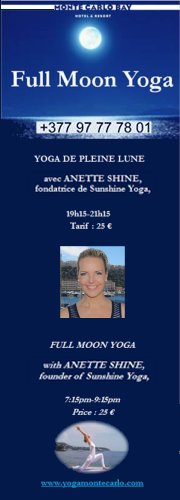General Articles
Buddhism and the Art of Meditation

Buddhist monk Matthieu Ricard who left his successful scientific career to convert to Buddhism travelled from Nepal and gave an interesting presentation on the benefits of meditation at the Yacht Club of Monaco (YCM) last week, at an event organized by the associations Karuna-Schechen and Namaste, with proceeds donated to humanitarian projects in Nepal. Ricard is a Buddhist world specialist who frequently accompanied the Dalai Lama in his travels as an interpreter.
His book “The Monk and the Philosopher” was a bestseller in France before being translated into twenty languages. Among his other books published is the photographic album The Spirit of Tibet as well as Advocacy for Happiness, The Art of Meditation, and translations of Tibetan texts. He moved to the Himalayas in 1972 living in the Shechen Monastery in Nepal.
Photo: Anthony Torriani, Nancy Dotta (Namaste), Mattieu Ricard, Pieter van Naeltwijck, Barend van der Vorm (courtesy of Karuna-Schechen)
***
Book Description
Publication Date: Feb 2000:
Jean Francois-Revel, a pillar of French intellectual life in our time, became world famous for his challenges to both Communism and Christianity. Twenty-seven years ago, his son, Matthieu Ricard, gave up a promising career as a scientist to study Tibetan Buddhism -- not as a detached observer but by immersing himself in its practice under the guidance of its greatest living masters.
Meeting in an inn overlooking Katmandu, these two profoundly thoughtful men explored the questions that have occupied humankind throughout its history. Does life have meaning? What is consciousness? Is man free? What is the value of scientific and material progress? Why is there suffering, war, and hatred? Their conversation is not merely abstract: they ask each other questions about ethics, rights, and responsibilities, about knowledge and belief, and they discuss frankly the differences in the way each has tried to make sense of his life.
Utterly absorbing, inspiring, and accessible, this remarkable dialogue engages East with West, ideas with life, and science with the humanities, providing wisdom on how to enrich the way we live our lives.




